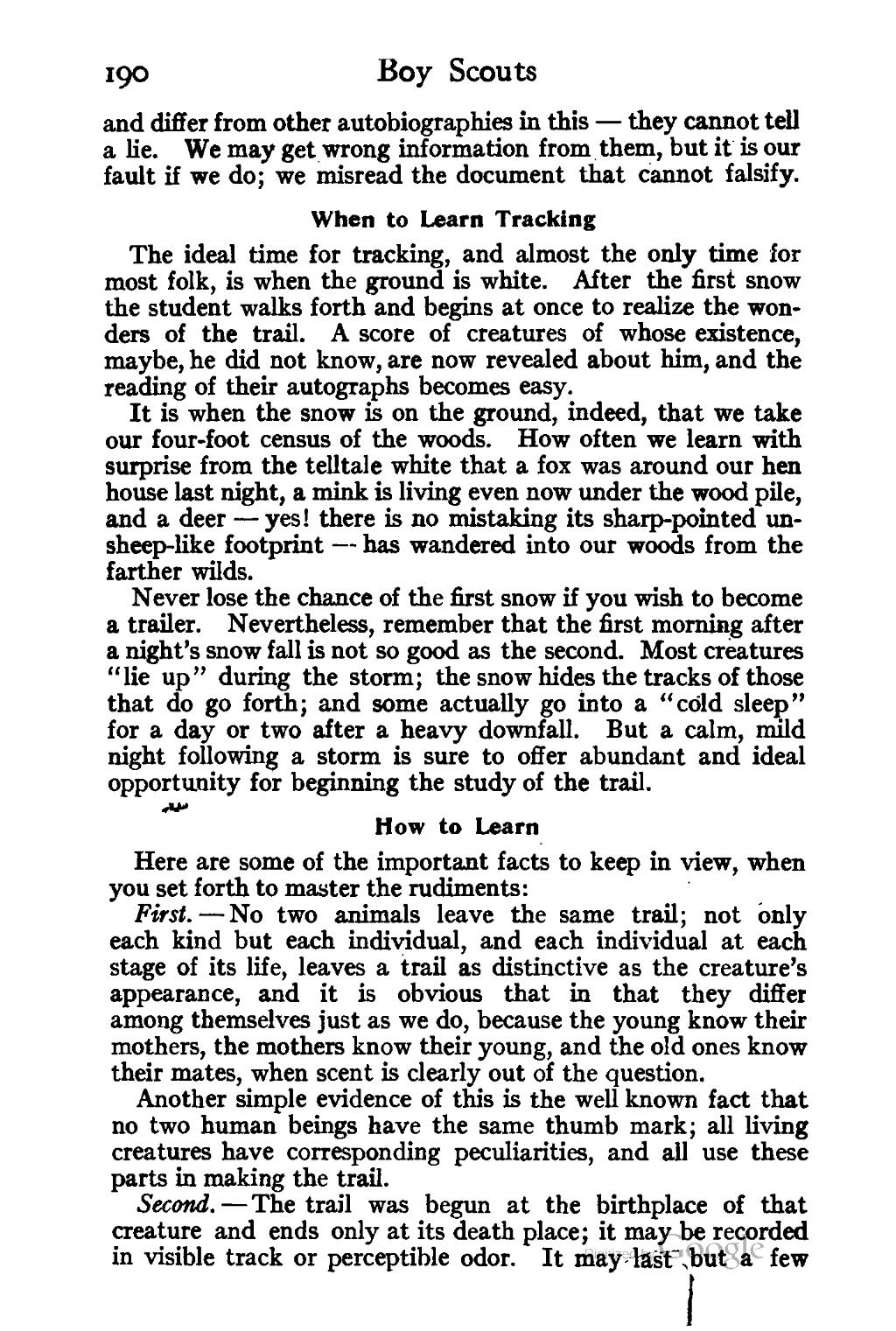x9o Boy Scouts and differ from other autobiographies in this -- they cannot tell a lie. We may getwrong information from them, but it'is our fault if we do; we misread the document that Cannot falsify. When to Lzarn Tracking The ideal time for tntck?g, and almost the only time for most folk, is when the ground is white. After the first snow the student walks forth and begins at once to realize the won- ders of the trail. A score of creatures of whose existence, maybe, he did not know, are now revealed about him, and the reading of their autographs becomes easy. It is when the snow is on the ground, indeed, that we take our four-foot census of the woods. How often we learn with surprise from the telltale white that a fox was around our hen house last night, a mink is living even now under the wood pile, and a deer --yes! there is no mistaking its sharp-pointed un- sheep-like footprint -~ has wandered into our woods from the farther wilds. Never lose the chance of the first snow if you wish to become a trailer. Nevertheless, remember that the first mornlag after a nlght's snow fall is not so good as the second. Most creatures "lie up" during the storm; the snow hides the tracks of those that do go forth; and some actually go into a "c01d sleep" for a day or two after a heavy downfall. But a calm, mild night following a storm is sure to offer abundant and ideal opportunity for beginning the study of the trail. How to Lzarn Here are some of the important facts to keep in view, when you set forth to master the rudiments: First.--No two animals leave the same trail; not bnly each kind but each individual, and each individual at each stage of its life, leaves a trail as distinctive as the creature's appearance, and it is obvious that in that they differ among themselves just as we do, because the young know their mothers, the mothers know their young, and the old ones know their mates, when scent is clearly out of the question. Another simple evidence of this is the well known fact that no two human beings have the same thumb mark; all living creatures have corresponding peculiarities, and all use these parts in making the trail. Second.--The trail was begun at the birthplace of that creature and ends only at its death place; it may?be recorded in visible track or perceptible odor. It ?y?s?fi? few
Stránka:roll 1911.djvu/211
Z thewoodcraft.org
Tato stránka nebyla zkontrolována
